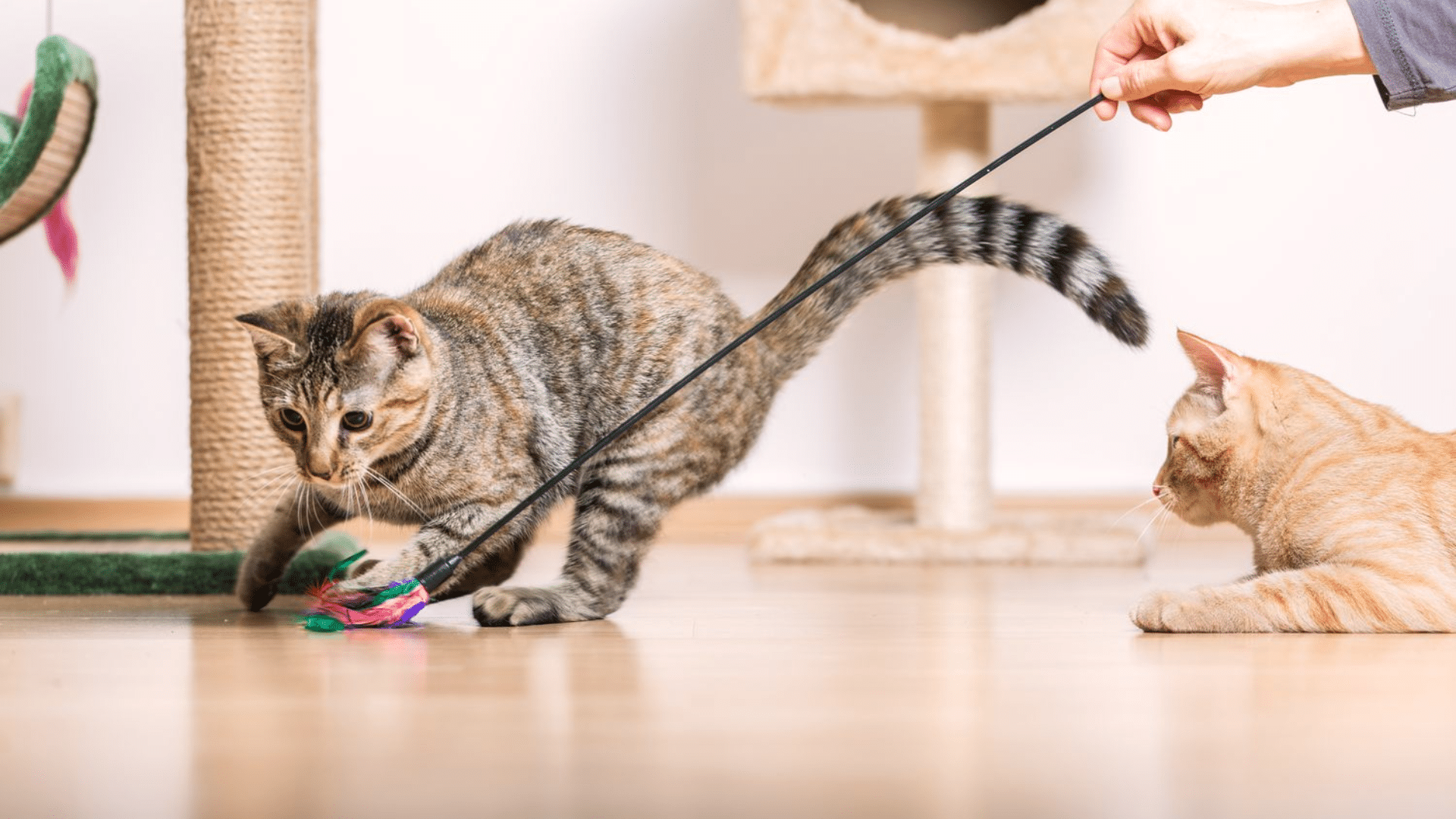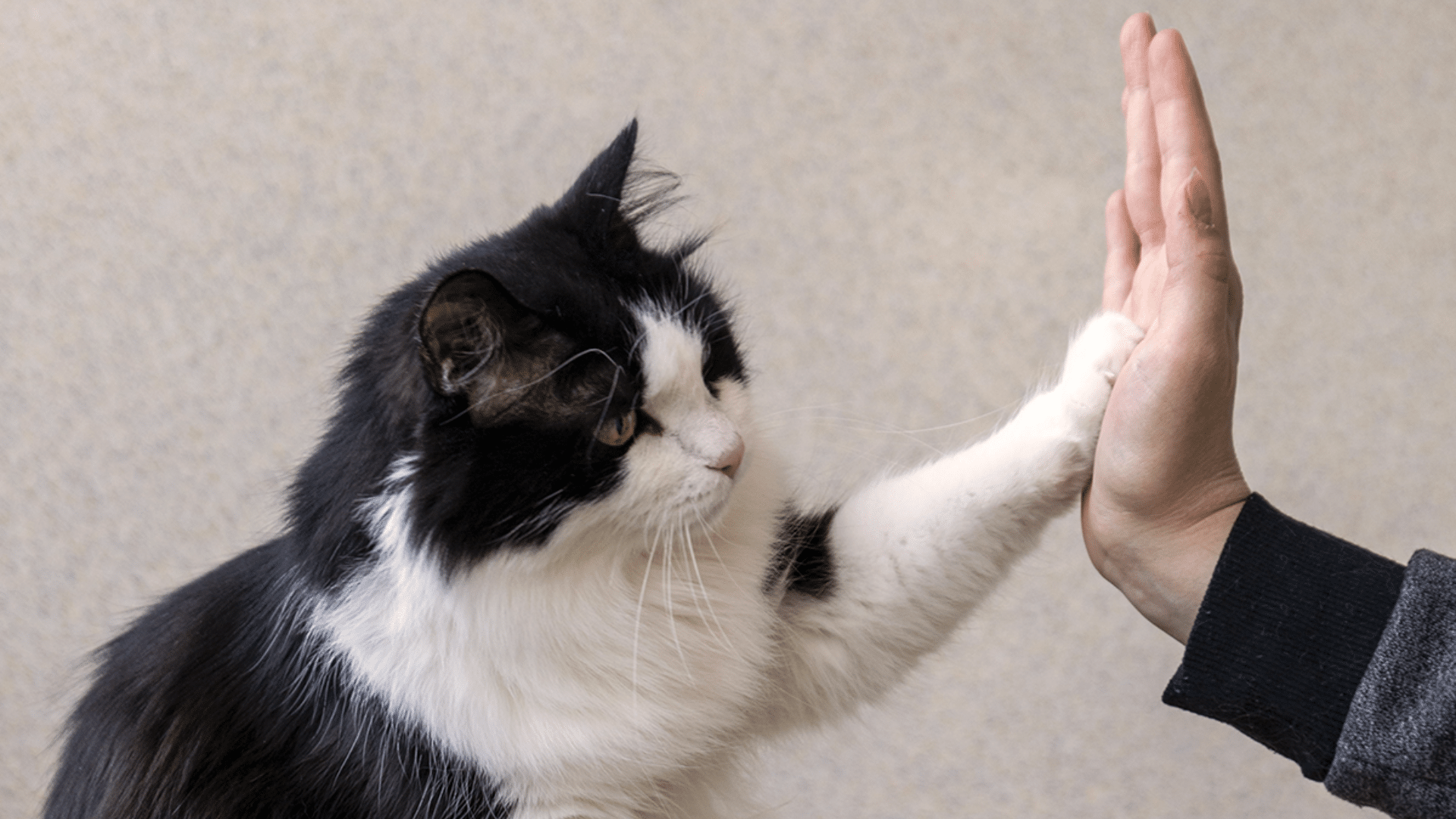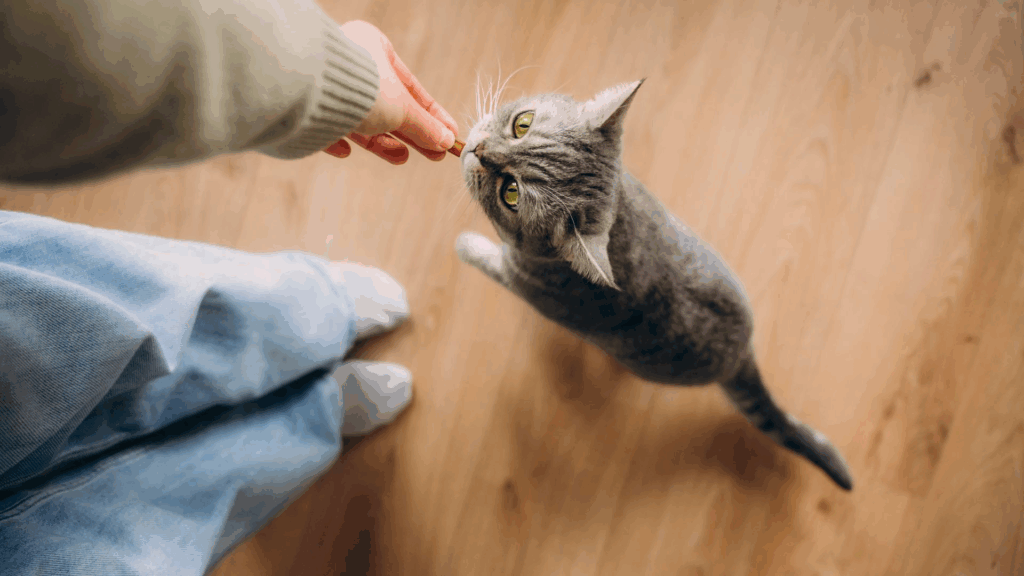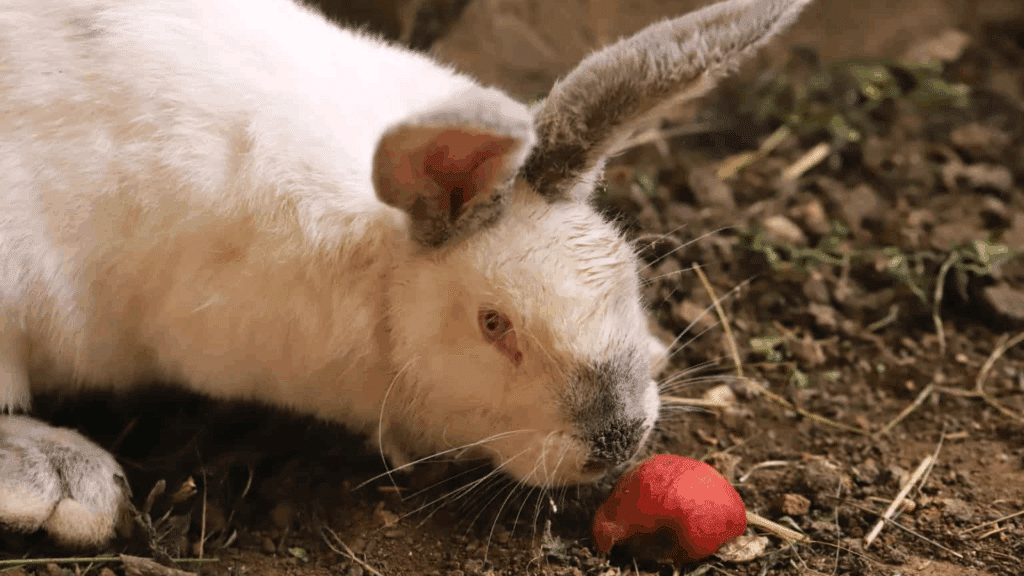Clicker training for cats is something I’ve found to be simple, kind, and surprisingly fun. It’s a reward-based way to teach your cat good behavior and even a few cool tricks.
All you need is a small tool called a clicker, which makes a quick sound that tells your cat, “Yes, that’s right!” followed by a treat.
This method helps your cat learn faster, focus better, and actually enjoy training.
In this guide, I’ll walk you through:
- How clicker training really works
- Step-by-step tips to get started
- Easy and fun tricks for smart cats
Clicker training isn’t just about teaching commands; it’s about communication.
When you and your cat start working together, you’ll see more trust, better behavior, and a stronger bond grow between you every day.
What is Clicker Training?
Clicker training is a positive and reward-based method that helps your cat learn new behaviors through sound and treats. I like it because it’s simple and gentle.
You’ll use a small tool called a clicker that makes a short click sound.
When your cat does something right, you click once and then give a treat right after. The click becomes a clear signal that tells your cat, “You did it right!”
Over time, your cat connects the sound with rewards and starts repeating the behavior to hear that click again.
Cats respond well to this because they learn best through timing and consistency.
The click sound is quick, sharp, and always the same, so it stands out better than words. All you need to start are two basic tools: a clicker and your cat’s favorite treats.
How to Clicker Train a Cat?

Clicker training helps your cat learn new behaviors through rewards and patience. With the right tools and timing, you can teach your cat fun tricks and good habits step by step.
1. Gather Your Supplies
Start with a clicker, some small treats, and a quiet, distraction-free space. Cats respond better in calm environments where they feel safe.
Choose treats that your cat really enjoys, like tiny bits of cooked chicken, tuna, or a soft store-bought treat.
The treats should be easy to chew so your cat stays focused. Use a clicker that makes a clear but gentle sound, not too sharp or loud. You’ll also need patience.
Training takes time, and your cat learns best when the sessions are relaxed and consistent. Always make the experience fun and positive.
2. Associate the Click with Rewards
Before teaching any trick, your cat must learn that the click means a treat is coming. Start by clicking once and immediately giving your cat a treat.
Repeat this a few times in short sessions so your cat links the sound with a reward. Soon, when you click, your cat will look at you, expecting something good.
This step is called “charging the clicker.” Avoid overdoing it; stop before your cat gets bored or walks away.
Once your cat understands that the sound predicts a reward, you’re ready to move on.
3. Teach Simple Actions First
Now that your cat knows the click means a treat, begin teaching basic commands like “sit”, “come”, or “touch.” Use a treat to guide your cat into position.
For example, hold the treat above the cat’s head until it sits, then click and give the treat right away.
Timing is key; the click must happen the instant your cat performs the correct action. If you wait too long, your cat may not understand what earned the reward.
Keep sessions about five minutes long; cats learn better in short, frequent lessons. Stay patient and encouraging throughout.
4. Add Cues and Build Skills
Once your cat can perform simple actions, add verbal cues or hand signals. For example, say “sit” right before your cat sits, then click and treat.
Soon, your cat will follow cues alone, and you can teach tricks like “high five,” “spin,” or leash walking.
Always click and reward immediately after your cat performs the right action. As your cat learns, you can reduce treat frequency, using praise or petting instead.
Keep sessions positive, end on success, and never punish mistakes. Cats learn best through patience and consistency.
How Does Clicker Training Work?
Clicker training works through positive reinforcement, which means rewarding good behavior so your cat repeats it.
I use the clicker to mark the exact moment my cat does something right, like sitting or staying calm. That quick click sound acts as a signal that a treat is coming.
Over time, your cat learns to connect the sound with rewards, making it easier to understand what you want.
The key is timing and consistency; you must click at the right moment every time.
If you delay or forget, your cat won’t link the action to the reward. I’ve noticed that short, regular sessions help cats learn faster and stay focused.
With patience and practice, the clicker becomes your cat’s way of knowing, “I did well,” which builds trust and makes training feel natural and rewarding for both of you.
Tips for Clicker Training Cats
Clicker training works best when you stay calm and consistent. These simple tips can make your training sessions more enjoyable and effective for both you and your cat.
- Keep each session short, about five minutes or less.
- Use your cat’s favorite treats as rewards to hold attention.
- Train in a quiet, calm space with no distractions.
- Be patient, cats learn at their own pace.
- Click immediately after the right behavior to mark success.
- End on a positive note with praise or a final treat.
- Practice regularly but avoid overtraining in one sitting.
Why Should You Clicker Train a Cat?
Clicker training does more than teach tricks; it helps your cat grow smarter, calmer, and more connected to you. This is why it’s worth trying.
1. Improved Behavior
Clicker training helps you guide your cat’s behavior in a calm and positive way. Instead of punishing bad habits, you reward the actions you want to see more often.
I’ve found this approach builds trust and reduces unwanted habits like scratching, biting, or jumping on counters.
Your cat begins to understand that good behavior brings rewards, which makes them more willing to listen and cooperate.
Over time, your cat grows calmer, more confident, and easier to handle through this positive method.
2. Mental Stimulation
Cats need mental exercise just as much as physical play, and clicker training gives them both.
Each session challenges your cat to think and react, helping them figure out what earns a click and a treat. I’ve noticed how it sharpens their focus and keeps boredom away, especially for indoor cats.
It’s a fun, engaging way to keep their mind sharp and energy balanced.
Regular training sessions can improve problem-solving skills, reduce stress, and make your cat’s days more exciting.
3. Easier Communication
Clicker training builds clear communication between you and your cat. The click sound marks the exact moment they do something right, removing all confusion about what you’re rewarding.
I like how simple it makes learning; your cat doesn’t have to guess what pleases you.
With time, they start reading your signals and body language better.
This clear, consistent feedback helps your cat trust your guidance, follow cues more easily, and feel more connected to you during daily routines and playtime.
4. Stronger Bond
Every clicker training session helps build a stronger bond between you and your cat. Because this method is based on rewards, patience, and trust, your cat begins to associate you with good things.
I’ve seen cats become more affectionate, relaxed, and eager to interact when training becomes part of their routine.
It’s not just about teaching tricks; it’s about building a partnership. Each click, treat, and bit of progress helps your cat see you as a source of safety, fun, and understanding.
Advanced Clicker Training Ideas for Smart Cats

Once your cat masters the basics, you can try advanced clicker training for more fun and challenge. Start with a high-five, hold out your hand, wait for your cat to touch it, then click and treat.
It’s easy and boosts confidence. Then, teach a spin by guiding your cat in a circle and clicking when they finish.
Want something more playful? Try fetch. Begin with your cat touching the toy, then picking it up, and finally bringing it back. Reward every small step.
These advanced tricks strengthen focus and build trust between you and your cat.
Keep the sessions light and positive. Cats learn best when they’re curious, not pressured. With steady practice, your cat will surprise you with what it can do.
How Long Does Clicker Training Take to Work?
Clicker training timelines vary from cat to cat. Some cats catch on within a few days, especially if they’re food-motivated and curious.
Others might take a few weeks to fully understand that the click means reward and start responding to cues.
The key is consistency and patience, not speed. Short, daily sessions work better than long or irregular ones. Cats learn best when training feels fun and stress-free.
Avoid rushing or comparing progress; every cat learns at its own pace.
If your cat seems distracted or uninterested, take a short break and try again later. Keep rewarding good behavior right after the click to reinforce learning.
Over time, regular, positive sessions help your cat build confidence and respond more reliably.
With steady effort, most cats start showing progress within two to four weeks of consistent clicker training.
Common Mistakes to Avoid During Clicker Training
Clicker training works best when done with the right timing and patience. Avoid these common mistakes to keep your cat motivated and learning smoothly.
- Clicking too late: Click the moment your cat performs the right action to avoid confusion.
- Skipping rewards: Always follow a click with a treat so your cat connects the sound to something positive.
- Training too long: Keep sessions short, about five minutes, to hold your cat’s focus.
- Rushing through steps: Let your cat master one action before teaching another.
- Using the clicker as punishment: Clickers should only signal rewards, never negative behavior.
- Inconsistent cues: Use the same word or gesture every time to avoid mixed signals.
- Ignoring your cat’s mood: Stop if your cat seems tired or uninterested and resume later when relaxed.
Conclusion
Clicker training takes time, patience, and steady practice, but the results are worth it. Each click and reward strengthens your bond and helps your cat understand you better.
Stay calm and consistent, even when progress feels slow; every small step counts.
With regular training, your cat will grow more confident, responsive, and happy, making daily life easier for both of you.
Keep sessions fun and positive so your cat looks forward to learning. Remember, this is more than just teaching tricks; it’s about building trust and communication.
So grab your clicker, pick your cat’s favorite treats, and start today.
The sooner you begin, the sooner you’ll see how rewarding clicker training can be for you and your furry friend.








